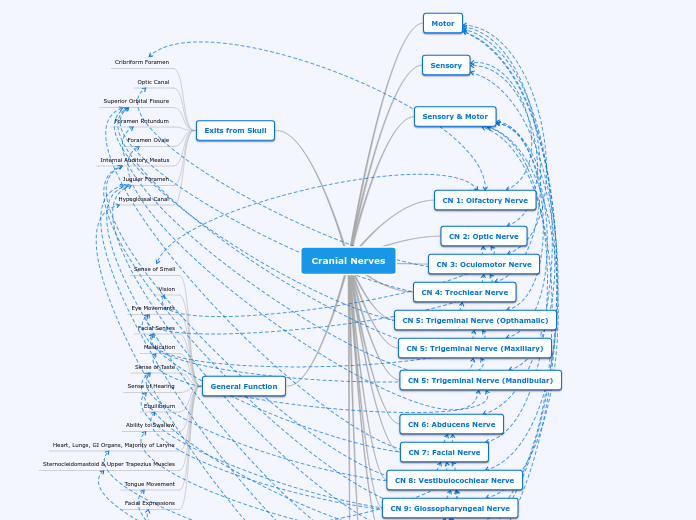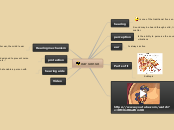Summary of article
Discussion
Case study 4:Developing a unique ready to eat product, described as a fusion of a gyro and a Jamaican patty, T-Style Patty
Sensory evaluation conducted in three phases
Final phase: A food action/attitude rating test
1. To determine the attitudes of panelists to eating the patty.
Results: 1. 85% of the assessors agreed that they would eat the product very often.
Second phase: A hedonic rating test 1. To get the test subjects acceptance on certain attributes of the shell and the filling.
Results: 1. The taste of the entire product was very much liked but the aroma and the appearance of the filling did not have much of an impact.
First phase: A descriptive profile 1. To test subjects perception on attributes of both the patty shell and the filling.
Questionnaire - To develop the panelist sensory/attribute profile for the patty and to make alterations to the recipe.
Results: 1. An appetising appearanceof patty, it was tasty and savoury, the aroma of the shell was mild.
2. The filling was both aromatic and savoury and it had moist filling in a soft shell.
3.67.5% of the panelist: the product to be fantastic with no improvements needed while the remaining percentage: the product was in need of improvement due to personal presence in salt, but would eat again
Case study 3: Development of a unique flavoured ice cream, Corn Flakes N' Kandied Fruit Koconut Ice Cream
Sensory Evaluation in three phases
Final phase: A food action/attitude rating test
1. To determine the attitudes of panelists to the modified ice cream
Results: 1. 80% of the assessors agreed that they would eat the product very often.
Second phase: A paired preference test
1. To identify most preferred sample in two samples from the original and modified recipes of the product
Results: 1. 17 out of 20 panelists prefer sample 983, the probability from the statistical table (X = 17, n = 20) would be 0.003.
Since a probability of 0.05 or less is usually required for the result to be considered significant, it would be concluded that sample 983 was significantly preferred over sample 322.
First phase: A descriptive rating test and questionnaire
1. To test subjects perception on the product’s appearance, aroma, texture, sweetness and flavour.
2. To develop the panelist sensory/attribute profile for the ice-cream by using the results from the questionnaire & test.
Results: 1. The ice cream had an appealing, aroma, and flavour, with the texture of just ‘ok’ and the sweetness needed improvement.
Suggestions: 1. Changes should be made to the corn flakes topping so that the natural crunchiness is maintained. 2. The cornflakes should be incorporated within the ice cream.
Case study 2: Developing a healthy granola bar snack, TCL's Fruity Nutritional Bar
Two phases of sensory evaluation
Second stage: Food action/attitude rating test
1.To determine the attitudes of panelist to the modified granola bar.
Results: 1.Panelist asked to evaluate a sample of the modified granola bar and indicate which action best describe their feelings.
2. 58% agreed that they would eat the product very often.
3. 17% would eat the product if it was available but would not go out of their way to do so.
4. 25% indicated that they would only eat the product if forced to.
First stage: Hedonic rating test and a questionnaire.
1.To get the subjects acceptance on ceetain product attributes and recommendations how the granola bar can be improved.
Results: 1.Texture should be improved (too brittle or crumbly).
Suggestions:
1. Use marshmallows to help the product bind better.
2. The almonds replace with sun flower seeds for those who allergic to nuts can safely consume the product.
Case study 1: Developing ABC Punch, a unique, nutritious, delicious and fun drink for kids and teenagers
Three phases of sensory evaluation
Third phase: Food action/attitude rating test
1. Determine the attitudes of panellists to the modified product.
Results: 1. 55% panelist indicate will purchase the product often
2. 20% panelist indicate will buy now
3. 25% indicate would hardly ever buy the product
Second phase: Facial hedonic rating test
1. Evaluate by children
2. Determine the preference product characteristics and determine like/dislike fruits for the product.
Results: 1.The colour, smell, taste and sweetness are accepted.
2.Do not like the consistency of the punch, which is too thick in their opinion.
3.Some children loved the taste of the punch.
First phase: Hedonic rating test
1. Evaluate by adults and teenagers
2. To get panelist acceptance on product attributes and determine the preference taste
Results: 1. The appearance, aroma and taste acceptance and well likes
2.Reduce the level of sweetness
3.Make the punch less thick and grainy
4.Enjoy the overall flavour of the punch and do not like the flavour of banana and carrots.
Methodolgy
Selection of Sensory Test and Statistical Evaluation
1. Test aims
-Determination of differences
-Description of products/samples
-Focus on consumer preference
2. The sequence of events
-‘bench-top’ analysis
-Discernible difference between products
-If there is, the difference is significant through discriminative tests
-Intensity regarding relevant attributes for example magnitude estimation
-Determine which product is preferred
-Summary of the characteristics of the sample or specific attributes and the relevant intensities
3. The use of decision tree (to the identification of the most suitable test)
Selection of Panel Members
1.Screened to eliminate
2.Participants (panelists) be trained
3.Consumers
Sensory characteristics and appropriate vocabulary
1.Trained on senses used in examining food characteristic
2.Trained on definitions and right vocabulary for food attributes.
Sample preparation and delivery
1. The uniform size of sample
2. The sample serving temperature
3. Using a random 3-digit number as coded.
4. Presented in clean odour-free container.
5. Randomized the order, same for the replication.
6. Palate cleansing (ex: water).
7. Using booth.
8. The environment - free from distractions and has a good lighting and ventilation.
Taste intensity
To encourage students to discriminate between concentration of particular taste.
Samples of different concentrations are given Complete the scorecard on which the most and less intense
Taste Identification
To encourage students to develop the basic taste
Samples represent sweet, sour salt and bitter are given. Identify taste
Samples: A teaspoon sugar and 250 ml water, 1/2 teaspoon of salt and 250 ml water, 250 ml water and 2 teaspoons of lemon juice, 250 ml water and 100 ml decarbonated tonic
Conclusion
Appropriate sensory test method chosen should match the project objectives; the appropriate type of panelist for the type of testing and made sure that the sensory tasks were appropriate for the type of panelists employed
Key success of sensory evaluation required sensory principles to be combined with principles from other disciplines besides application of individual tests and techniques.
Sensory analysis is an important tool in food science and is becoming accepted as a necessary part of food quality experiments.
Introduction
Sensory Evaluation and Quality of Food
To ensure results in sensory assesment are reliable and valid the sensory panel must be screened, calibrated and validated.
Sensory analyse uses human panelists sensory perception related to thresholds of determination of attributes, the variance in individual sensory response experimental design to measure the sensory characteristics and the acceptability of food products & other materials.
Sensory evaluation is a scientific discipline used to evoke, measure, analyse and interpret those responses to product as perceived through the senses of sight, smell, touch, taste and hearing.
Challenges on Ensuring Consumer Acceptability and Market Success of
Consumer needs and company requirements must be addressed in the development or optimisation of a product to ensure the product will be successful if launched
Food products may have positive results when using tools and evaluation equipment to evaluate it but negative result in different perceptions, acceptability or preferences on consumption of the product.
Sensory Science and Decision Making in Food Industry
4 stages in the process of sensory judgement: physical concentration, perceived concentration, coded sensation and overt response.
Companies today use sensory science & methodology in their R&D and Marketing departments to reach a better product that can be accepted by consumers
In marketing, the priority is on people's perceptions of sensory quality rather than the real taste evaluations.









